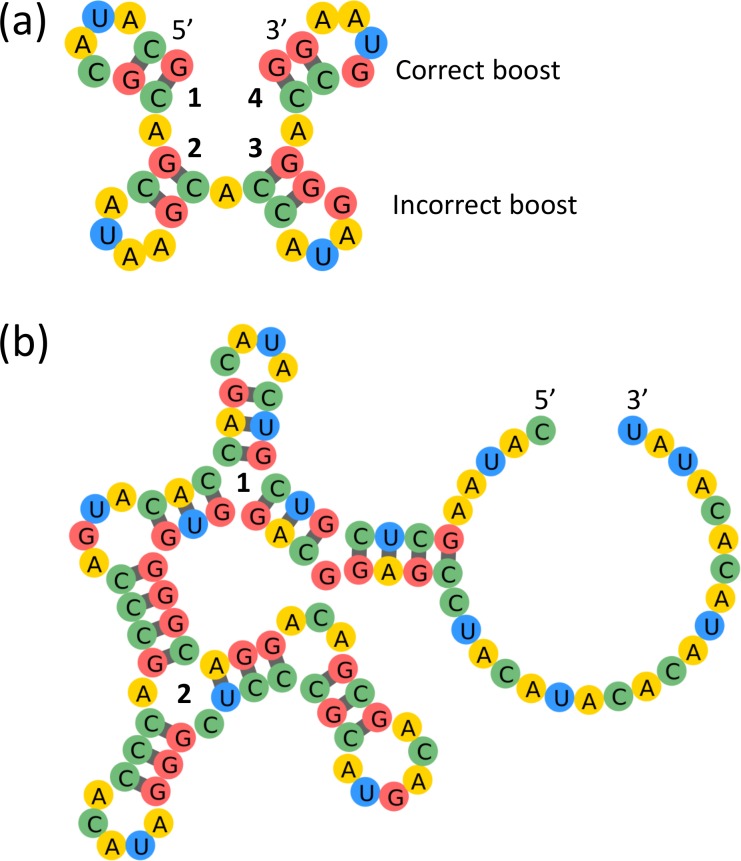Fig 3.
Examples of puzzles with short stems solved by our model: Shortie 6 (a), and Kyurem 7 (b). The Shortie 6 solution strategy involved introducing asymmetric base pairing patterns of GC/CG for stems 1 and 2 and CG/CG for stems 3 and 4. Upon first glance, it seems that the model has successfully learned how to boost 4-loops, since it makes G-mutations at edge bases of the 4-loops at stems 3 and 4. However, while stem 4 is boosted correctly, the G-mutation in the 4-loop of stem 3 is actually in the wrong position and does not stabilize the loop. Kyurem 7 is significantly more difficult due to the presence of two multiloops joining the short stems, but our model successfully proposes asymmetric stem designs around each multiloop to stabilize the structure. Multiloop 1 consists of three stems with a common pattern of alternating GC/AU pairs, whereas multiloop 2 consists of stems composed of almost entirely GC pairs, except for the single AU closing pair in the third stem. Mutations to all but four base pairs in Kyurem 7, highlighted in red, result in misfolding of the structure, indicating the need for precise design of the stem base pairings.

